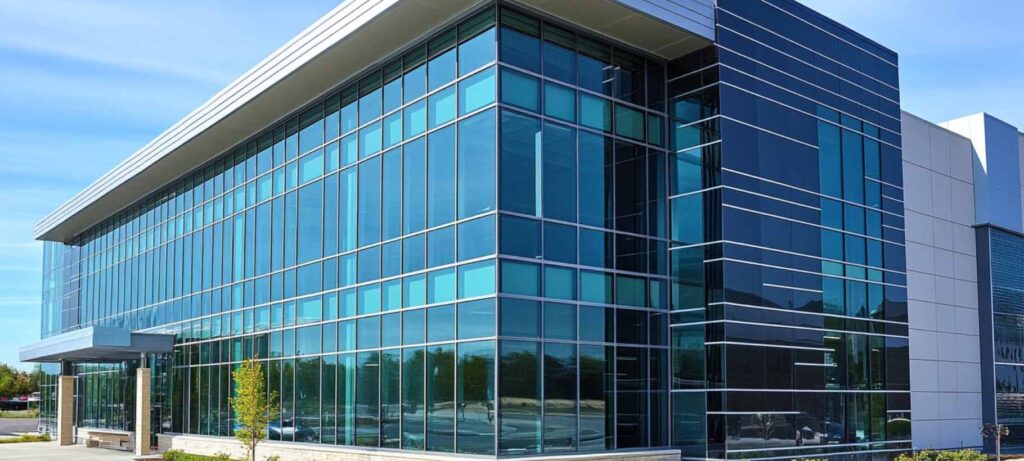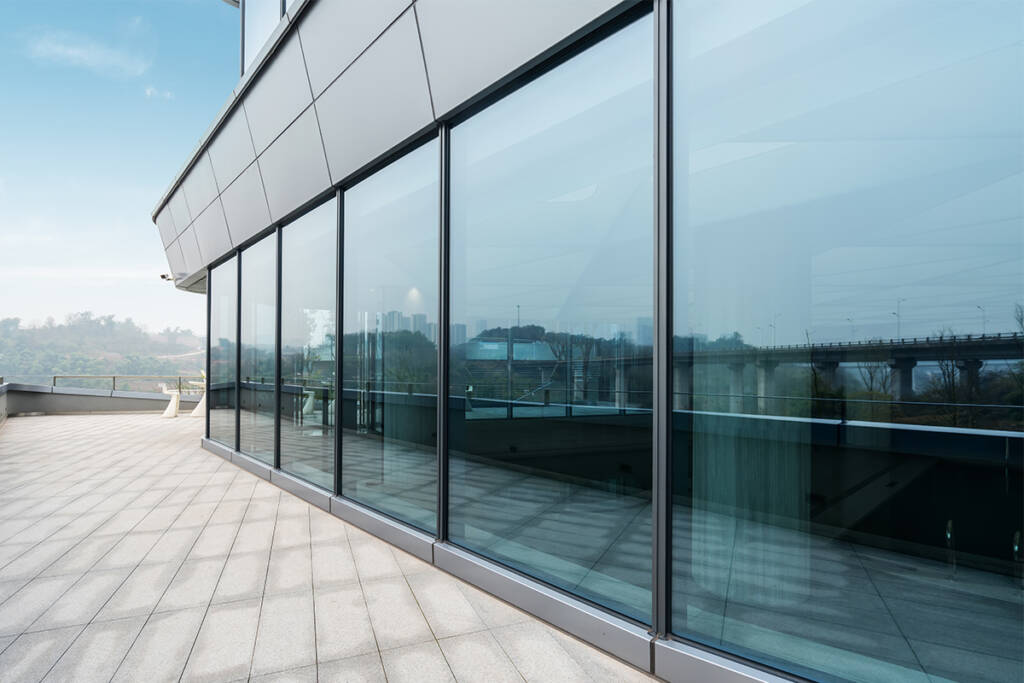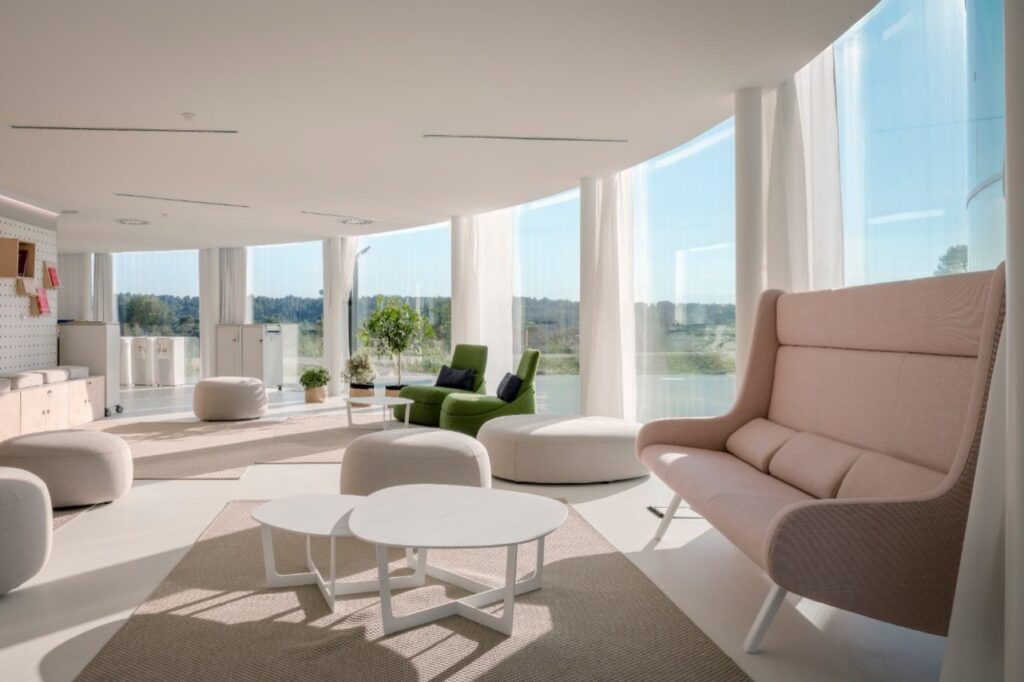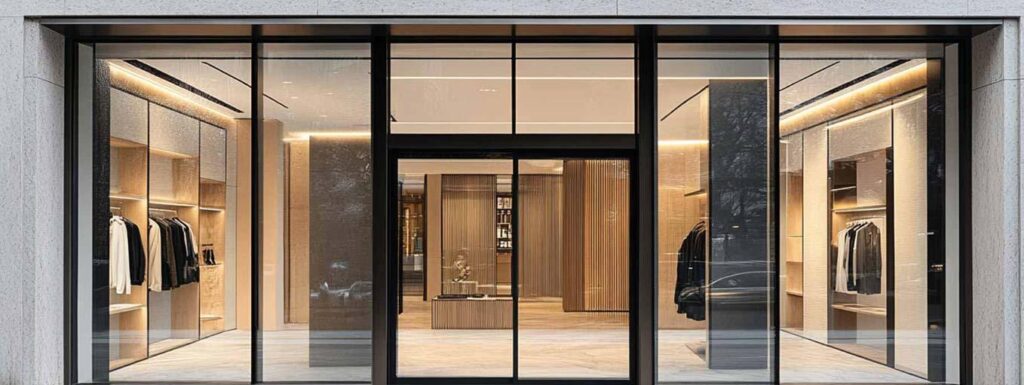Table of Contents
ToggleWhy Modern Architecture Demands More from Glass

In the past, glass was considered a fragile and decorative material. But in today’s skyscraper-filled skylines and sustainable buildings, it has evolved into a critical construction element—thanks to innovations like toughened, insulated, and laminated glass.
These advanced glass types deliver far more than just visual appeal. They offer benefits like:
- Structural strength for high-rise buildings
- Noise and thermal insulation for occupant comfort
- Safety features to withstand impact, storms, and break-ins
- UV protection and energy efficiency for sustainability
Toughened Glass: Resilience and Reliability

Toughened glass undergoes a thermal tempering process that increases its strength 4 to 5 times more than regular float glass. It’s ideal for applications where safety and durability are non-negotiable.
Key Applications:
- Exterior façades of commercial towers
- Glass doors and partitions
- Balconies, railings, staircases
- Frameless shower enclosures
Main Features:
- Withstands high wind loads and thermal shock
- Breaks into blunt-edged pieces to reduce injury
- Scratch and impact-resistant surface
Performance Table: Toughened Glass
| Property | Value |
|---|---|
| Strength | 4–5 times stronger than float |
| Thermal Shock Resistance | Excellent |
| Safety on Breakage | High (crumbles safely) |
| Cost | Moderate |
Insulated Glass: Comfort Through Climate Control

As energy regulations become stricter and the push for sustainability grows, insulated glass units (IGUs) have become essential for energy-efficient buildings.
What Makes IGUs Special?
Made by sealing two or more panes of glass with a spacer filled with air or inert gas (like Argon)
Acts as a thermal and acoustic barrier
Greatly reduces energy bills by maintaining indoor climate
Benefits of Insulated Glass:
Excellent thermal insulation
Soundproofing for urban areas
Reduces HVAC loads
Minimizes condensation
Comparison: Glass Insulation Performance
| Glass Type | Thermal Efficiency | Noise Reduction | Energy Savings |
|---|---|---|---|
| Single Glazed Glass | Poor | Low | Minimal |
| Double Glazed IGU | Good | Medium | 30–40% |
| Triple Glazed IGU | Excellent | High | 50–60% |
Laminated Glass: Safety, Silence, and Style

Laminated glass is manufactured by sandwiching a plastic interlayer (like PVB or EVA) between two glass sheets. Even when shattered, the glass remains bonded to the interlayer, preventing injuries and break-ins.
Primary Uses of Laminated Glass:
- High-rise curtain walls
- Glass canopies and overhead glazing
- Bank and jewelry store windows
- Residential noise reduction windows
Advantages at a Glance:
- Superior soundproofing
- Excellent UV filtering
- Ideal for cyclone, hurricane, and impact-prone zones
- Retains structural integrity upon breakage
Toughened vs Laminated Glass – Which to Choose?
| Feature | Toughened Glass | Laminated Glass |
|---|---|---|
| Break Safety | Breaks into fragments | Holds together |
| Sound Insulation | Low | High |
| UV Protection | No | Yes |
| Impact Resistance | High | Very High |
| Cost | Moderate | Higher |
Real-World Impact on Skylines
Modern cityscapes across the world showcase how these glass types are changing architecture forever. From functional energy savings to safety in high-risk zones, glass now plays a leading role.
Iconic Structures Using Advanced Glass:
- Burj Khalifa, Dubai – Uses toughened glass for its wind- and heat-resistant façade
- The Shard, London – Employs insulated glass units for energy efficiency
- Apple Park, California – Built with curved laminated glass for safety and minimalism
Sustainable Benefits of Glass in Architecture
As cities strive toward becoming carbon-neutral, buildings must be energy-efficient. Glass contributes directly to this vision:
Environmental Advantages of Using Advanced Glass:
- Reduces need for artificial lighting
- Enhances daylighting without thermal gain
- Minimizes cooling and heating loads
- Contributes to green certifications like LEED, IGBC, GRIHA
Sustainability Metrics Table
| Glass Type | Energy Efficiency | Life Span | Recyclability | Maintenance |
|---|---|---|---|---|
| Toughened Glass | Moderate | 20+ years | High | Low |
| Insulated Glass | High | 20–25 years | Moderate | Moderate |
| Laminated Glass | Moderate–High | 25+ years | Moderate | Low |
The Future: Smart Glass and Beyond
With technology advancing rapidly, glass is evolving into something even more intelligent and interactive. Upcoming features include:
- Electrochromic Smart Glass – Tints on command via electrical current
- Solar Glass Panels – Convert sunlight into electricity
- Self-Cleaning Nano Coatings – Keep surfaces crystal clear without maintenance
- AI-integrated façade glass – Automatically adapts to external temperature and light conditions
These innovations will build upon the foundation laid by toughened, insulated, and laminated glass—taking cities into a smarter, greener, and more responsive era.
Conclusion: A Clear Path Forward
From towering glass-clad skyscrapers to cozy, sound-insulated homes, the influence of toughened, insulated, and laminated glass is undeniable. They are not only enhancing the aesthetics of buildings but also significantly improving their performance, safety, and sustainability. For architects, developers, and urban planners alike, these advanced glass technologies are the ultimate tools to redefine the modern skyline.
FAQs
What is the difference between toughened, insulated, and laminated glass?
Toughened glass is heat-treated for strength and safety, insulated glass features multiple panes for energy and sound efficiency, and laminated glass uses an interlayer to hold glass pieces together when broken. Each serves a unique purpose in modern architecture.
Is laminated glass stronger than toughened glass?
Laminated glass is not necessarily stronger in terms of impact resistance, but it is safer after breakage. While toughened glass shatters into harmless pieces, laminated glass stays intact due to its interlayer, offering better protection against forced entry and noise.
Why is insulated glass important for energy-efficient buildings?
Insulated glass helps maintain indoor temperatures by reducing heat transfer through windows. This decreases reliance on air conditioning and heating, ultimately lowering energy bills and carbon emissions, making it ideal for green buildings.
Can toughened glass be used for high-rise building façades?
Yes, toughened glass is ideal for high-rise façades due to its high strength, thermal resistance, and safety on breakage. It withstands strong winds and temperature fluctuations without compromising aesthetics.
How long does insulated glass last in buildings?
Well-installed insulated glass units (IGUs) can last 15–25 years depending on the quality of materials, sealant, and environmental conditions. Triple-glazed units may have even longer life spans.
